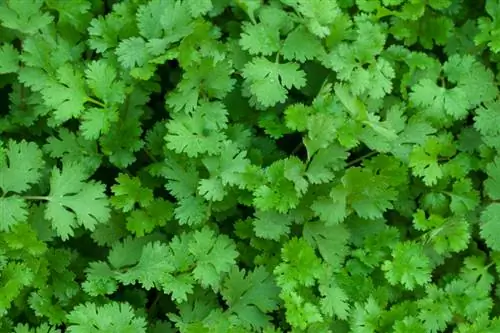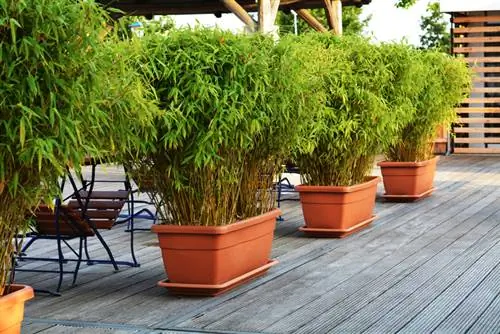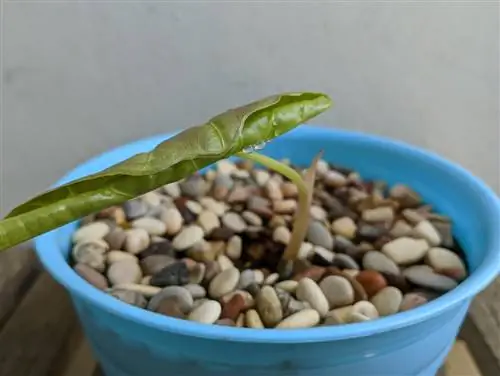- Author admin [email protected].
- Public 2023-12-16 16:46.
- Last modified 2025-01-23 11:20.
A columbine is happy to sow itself without asking. In not rare cases it grows exactly where it doesn't fit. But other reasons can also make a transplant campaign useful. What are they and what should you pay attention to when transplanting?

How should you properly transplant a columbine?
When transplanting a columbine, you should do so in spring and choose a sunny to partially shaded location. Enrich the planting hole with compost, dig up the columbine and plant it in the prepared hole. Then water sufficiently and watch out for diseases or pests.
Why it can make sense to transplant a columbine
Mostly there are the following reasons why a columbine should be transplanted:
- competitors that are too strong at the location (e.g. bushes that obscure the columbine)
- Soil tends to become waterlogged
- location too shady or too sunny
- too many columbines at the location
- for dividing the perennial
- Children or pets have access to the poisonous columbine
The best time: In spring
The best time to transplant is in spring. Before the columbine sprouts, it tolerates transplanting with flying colors. But it is extremely robust. It can also be implemented after the flowering period.
Some gardeners even report having successfully transplanted their columbine before flowering. This can also work. But one thing is important: never transplant on hot days. It should be cool and humid.
Where to transplant?
The chosen location should be sunny to partially shaded. If necessary, a shady place can also be an option. This is where you decide whether only the survival of the columbine is important to you or whether abundant flowers are the priority.
How to proceed
- Planting hole - twice as big as the root ball - dig out and loosen up
- Add compost
- Putting on gardening gloves
- Dig up the columbine deeply with a digging fork (long old root tubers) and divide if necessary
- plant in the prepared hole
- cover with humus soil and water
Decisive: The care afterwards
After planting, you should check your columbine daily or every 2 days (if possible) for the next 2 weeks. Transplanting stresses these plants and makes them more susceptible to diseases and pests. The top priority is: water thoroughly when there is no rain. This is essential for growth.
Tips & Tricks
Anyone who hopes that the columbine will completely disappear from its old location by transplanting will sometimes be surprised to find that it has already sown itself before transplanting






